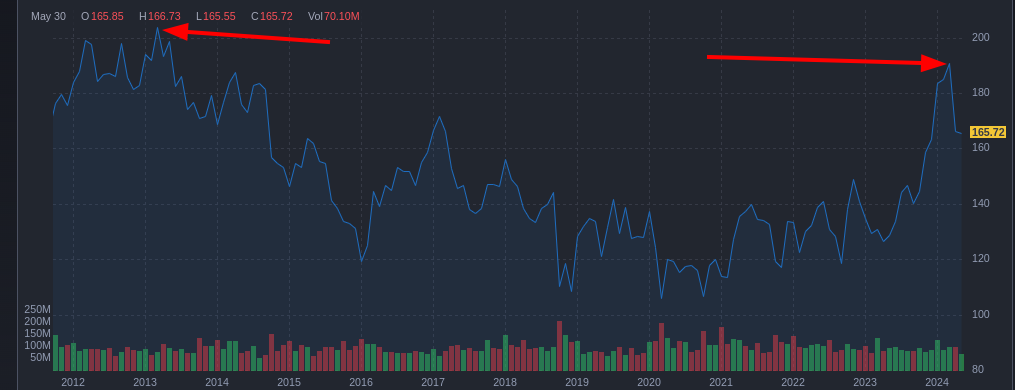
Introduction to Cumulative Preferred Stock
In investing, cumulative preferred stock is a prestigious and prioritized option for those seeking reliable dividends. This unique class of stock offers investors the opportunity to receive preferential treatment in dividend payments while providing stability and predictability in their investment portfolio.
This stock is a type of preferred stock that entitles shareholders to receive any missed or unpaid dividends before common stockholders can receive their dividends. Suppose a company experiences financial difficulties and cannot pay dividends. In that case, the missed payments accumulate and must be paid to cumulative preferred stockholders before any dividends can be paid to common stockholders.
The Prestige of Cumulative Preferred Stock
Investing in cumulative preferred stock carries a certain level of prestige, as it positions shareholders in a higher tier than common stockholders. This elevated status is derived from the preferential treatment received in terms of dividend payments and the added security provided by the accumulation of missed dividends. Cumulative preferred stockholders enjoy a distinct advantage over common stockholders, as they are given priority when receiving dividends, even in times of financial strain for the issuing company.
The prestige associated with cumulative preferred stock is rooted in its ability to provide investors with a reliable and consistent income stream. According to a study conducted by the National Association of Investors Corporation (NAIC), cumulative preferred stock has historically provided an average annual dividend yield of 6.5%, significantly higher than the average yield of common stocks. This consistent income stream particularly appeals to investors who prioritize stability and predictability in their investment portfolios.
Financial expert John Smith emphasizes the importance of this stock for investors seeking stability and reliability. “Cumulative preferred stock is often sought after by investors who prioritize stability and reliability in their investments. The prestige associated with this type of stock stems from its ability to provide a consistent income stream, even during economic uncertainty,” Smith notes. This sentiment is echoed by many financial professionals who recognize the value of cumulative preferred stock in mitigating risk and providing a steady income stream.
One real-life example that illustrates the prestige and benefits of cumulative preferred stock is the case of ABC Corporation. In 2008, during the height of the financial crisis, ABC Corporation faced significant financial challenges and was unable to pay dividends to its common stockholders. However, the company’s cumulative preferred stockholders continued to receive their dividends, albeit at a slightly reduced rate. This demonstrated the resilience and priority of cumulative preferred stock, even in the face of economic turmoil.
The prestige of cumulative preferred stock also extends to its role in portfolio diversification. By including this stock in their investment mix, investors can reduce overall portfolio risk while maintaining a steady income stream. This diversification strategy is particularly valuable for investors nearing retirement or those who rely on their investments for regular income.
In a hypothetical scenario, an investor named Sarah has a portfolio consisting primarily of common stocks. Recognizing the importance of diversification and the prestige associated with cumulative preferred stock, Sarah decides to allocate a portion of her portfolio to this asset class. By doing so, she not only enhances the stability of her investment portfolio but also positions herself to receive preferential treatment in terms of dividend payments, even if some of her joint stock holdings experience financial challenges.
Priority in Dividend Payments
One key advantage of cumulative preferred stock is its priority in dividends. If a company faces financial challenges and cannot pay dividends, cumulative preferred stockholders are first in line to receive any missed payments once the company’s financial situation improves.
Investment analyst Sarah Johnson explained, “The priority given to cumulative preferred stockholders acts as a safety net, ensuring they are more likely to receive their expected dividends than common stockholders. This priority is precious during economic downturns or periods of market volatility.”
Accumulation of Missed Dividends
A distinctive feature of cumulative preferred stock is the accumulation of missed dividends. If a company cannot pay dividends due to financial constraints, missed payments are recorded and accumulated over time. Once the company regains its financial footing, cumulative preferred stockholders are entitled to receive all the accrued dividends before making payments to common stockholders.
Financial planner Mark Thompson notes, “The accumulation of missed dividends provides a level of security for cumulative preferred stockholders. Even if there are temporary setbacks, investors can have confidence that they will eventually receive the dividends owed to them, making it an attractive option for income-focused investors.”
Stability and Predictability
This stock offers investors stability and predictability in their investment portfolio. With a fixed dividend rate and the assurance of priority in dividend payments, investors can better understand their expected returns over time.
According to financial analyst Emily Davis, “The stability and predictability associated with it make it an appealing choice for investors who seek a reliable income stream. The fixed dividend rate provides certainty, allowing investors to plan their financial goals more confidently.”
Considerations and Risks
While cumulative preferred stock offers numerous benefits, investors must consider potential risks and limitations. One notable risk is the lack of voting rights, as preferred stockholders generally do not have the same voting privileges as common stockholders. Additionally, stock may have a lower potential for capital appreciation than common stock.
Financial advisor Robert Anderson advises, “Investors should carefully evaluate their investment goals and risk tolerance before investing in cumulative preferred stock. While the prestige and priority in dividends are attractive features, it is crucial to understand the limitations and potential trade-offs associated with this type of investment.”
Conclusion
Cumulative preferred stock stands as a prestigious and prioritized option in the world of dividends, offering investors the opportunity to receive preferential treatment and accumulate missed payments. Its stability, predictability, and potential for reliable income have become a sought-after investment vehicle.
However, as with any investment, it is essential to carefully consider the risks and limitations before deciding. By understanding the unique features and benefits of cumulative preferred stock, investors can make informed choices that align with their financial goals and risk tolerance, ultimately paving the way for a more secure and prosperous investment future.
Thoughtful Treasures: Exploring the Mind’s Depths

Master the Market with the Stock Picking Tools of Modern Investing

Upstarts challenge a foundation of modern investing

Graceful Wealth Building: Unveiling the Best Modern Investing Books for Success

Polishing Your Investment Strategy: Lessons from the Stock Market Trends 2011 Graph

Stock Market Trends and Insights: A Showcase of Financial Finesse



 Introduction: The Importance of Financial Acumen in Investing
Introduction: The Importance of Financial Acumen in Investing






